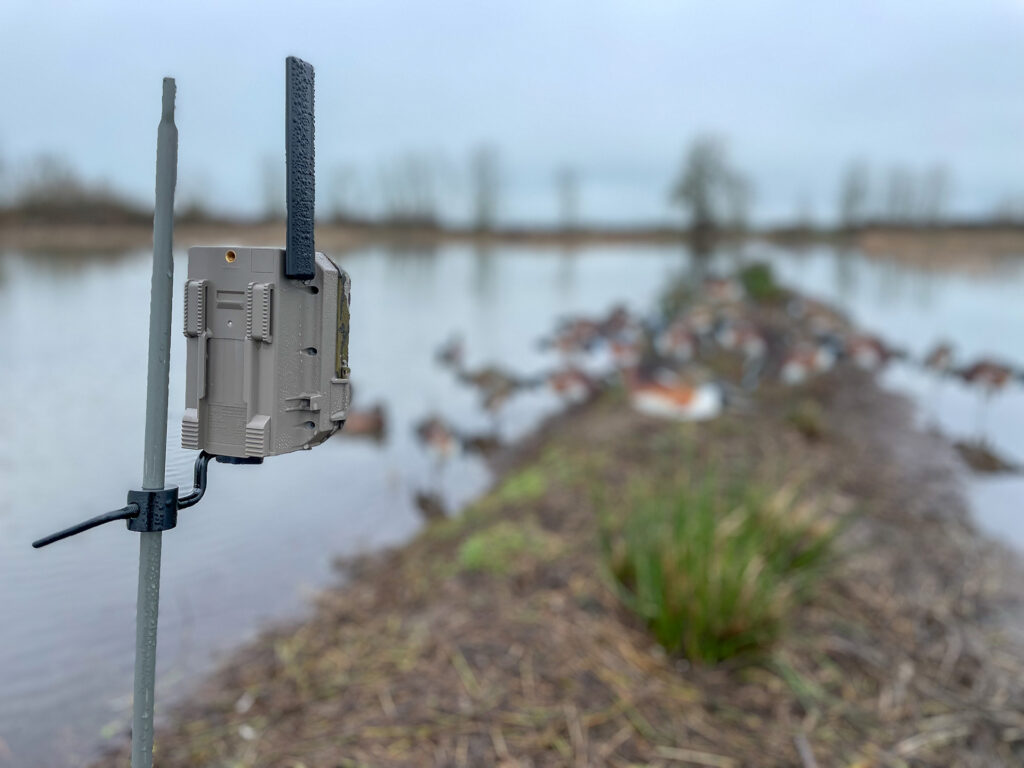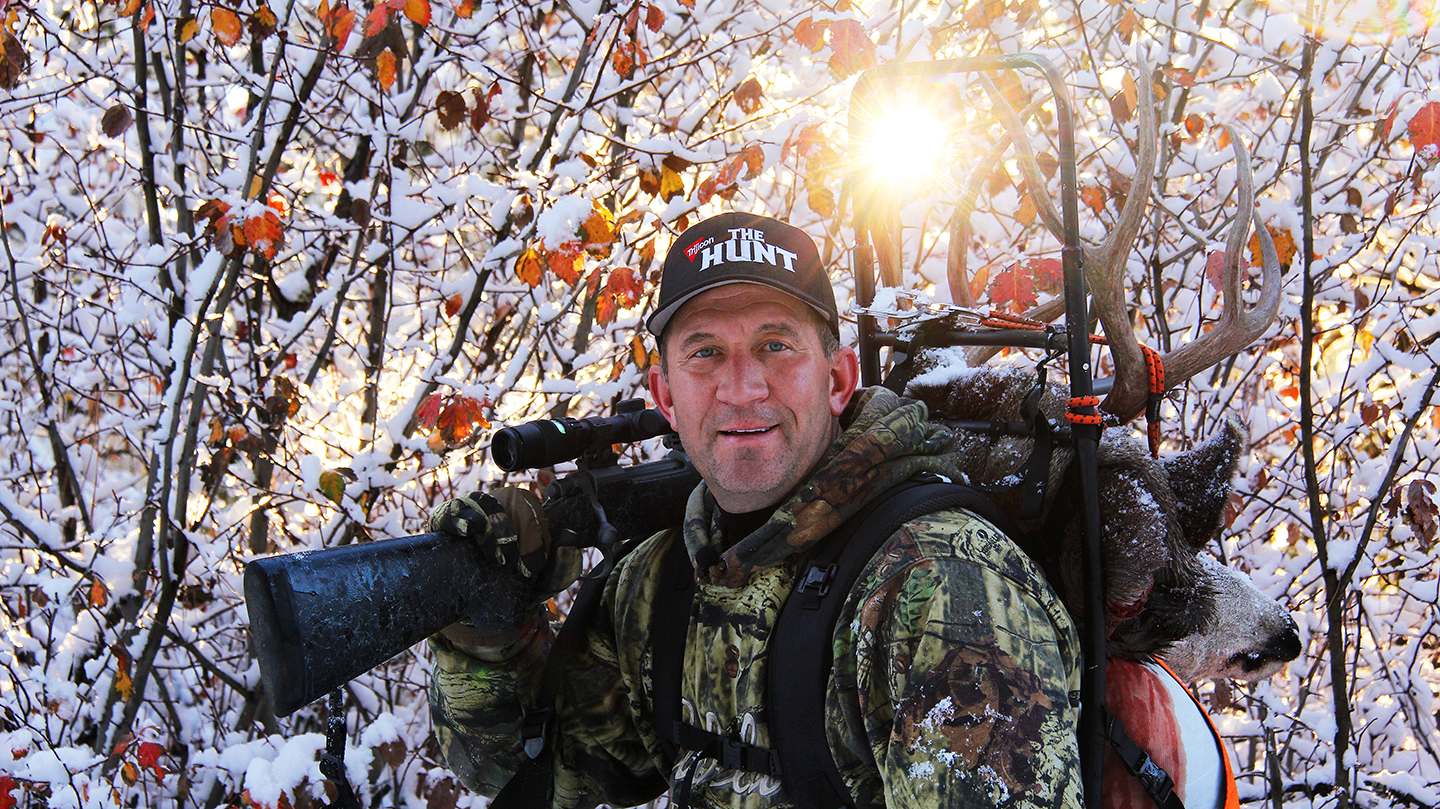Trail cameras are amazing tools. Often, we think of them as “big-game only” tools, but waterfowl fanatic Scott Haugen uses cellular trail cameras to keep tabs on ducks. The cameras tell Haugen when and where to strike.
by Scott Haugen
Walking to a duck pond where I regularly hunt, I noticed the ankle-deep, green grass was flat. It was no longer ankle-deep. It was pouring rain and dark. I thought it odd the farmer would have cut the grass this time of year. Then again, we’d had unseasonably warm temperatures, and ryegrass growth was flourishing. Usually, sheep are put in fields to keep the grass down. Then I knelt for a closer look.
The grass was cut to an even height, less than an inch tall. Then, wet, green droppings that had been washed into the soil caught my eye. They were wigeon droppings.
After my morning hunt, I went to the truck and grabbed a Moultrie Mobile trail camera. I set it in green grass near where the wigeon had grazed. Two nights later, I caught a big flock of cotton tops feeding fast and furiously.
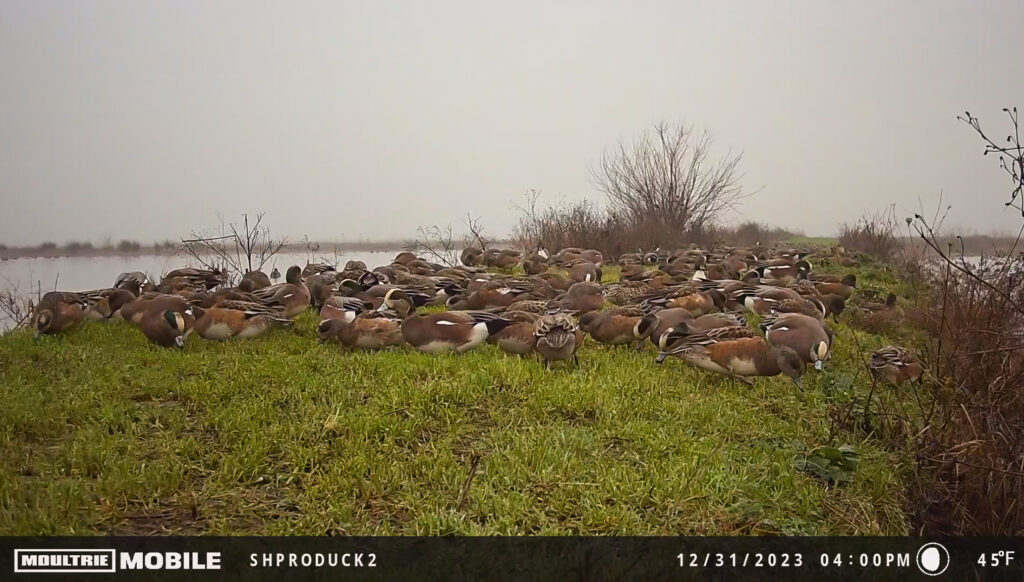
The following day, the wigeon returned. Once they started hitting it in the daylight, I made my move. The next day, I had a dozen Final Approach Live Wigeon decoys floating in shallow water near shore. In the green grass, there were three dozen Big Al’s Wigeon Silhouette decoys on shore. My intent was to recreate what I’d seen on the trail camera: wigeons landing in the water, swimming to shore, and grazing.
I took a little homemade panel blind, got behind it with one of my dogs, and waited. Soon after daylight, wigeon started flying, and in less than an hour, I left with six drake wigeons and a nice pintail.
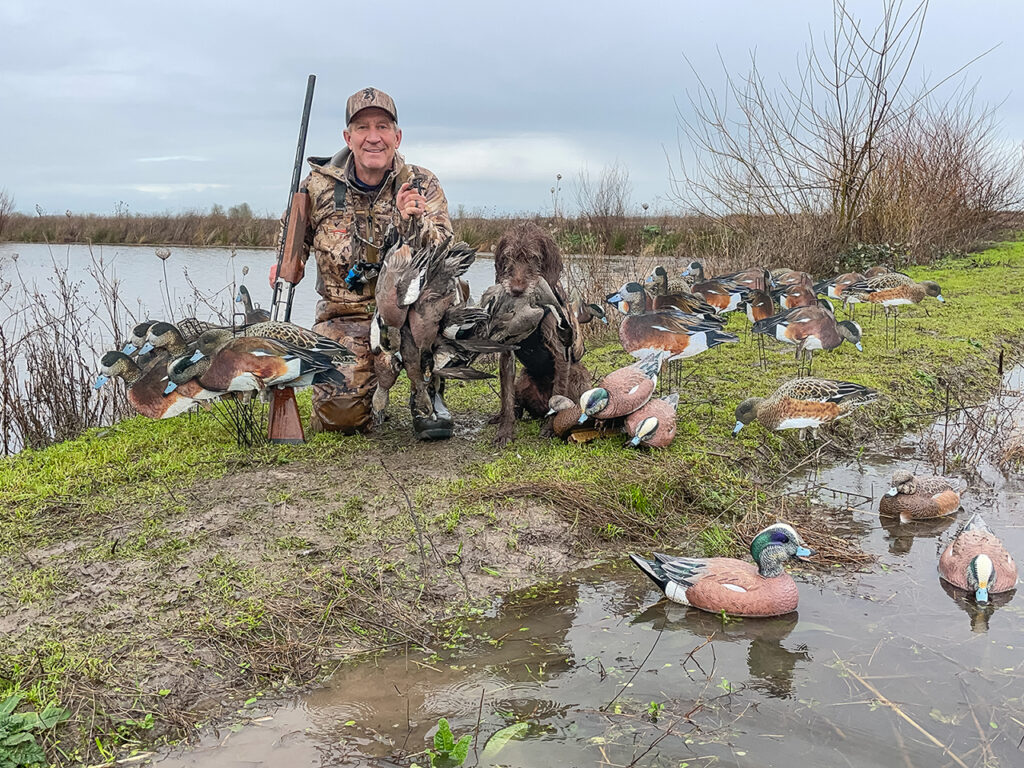
Two days later, I was back, 250 yards away, hunting a spot where wigeon were also grazing. Another Moultrie Mobile trail camera led me to that place. That week, I hunted two more places with great results, thanks to the time-sensitive information I received on my cellular trail cameras.
I started using trail cameras for duck hunting four years ago. I refused to go mobile because I didn’t want my phone in my face constantly. But I was missing too many opportunities, and the time it took to drive, pull trail camera cards, and scrub through the footage became overwhelming. Worse, once I discovered ducks on my trail cameras, they were often gone when I went to hunt them. I was too late.
Enter cellular trail cameras. I tried multiple brands and settled on the Moultrie Mobile Edge Pro. I always set my trail cameras on video mode, never still images, because a 15-second video clip reveals so much more than a photo could. The clarity of the Edge Pro camera and how easy it was to manage made it my top choice. Within two weeks, I went from owning three to 20 Edge Pro cameras.
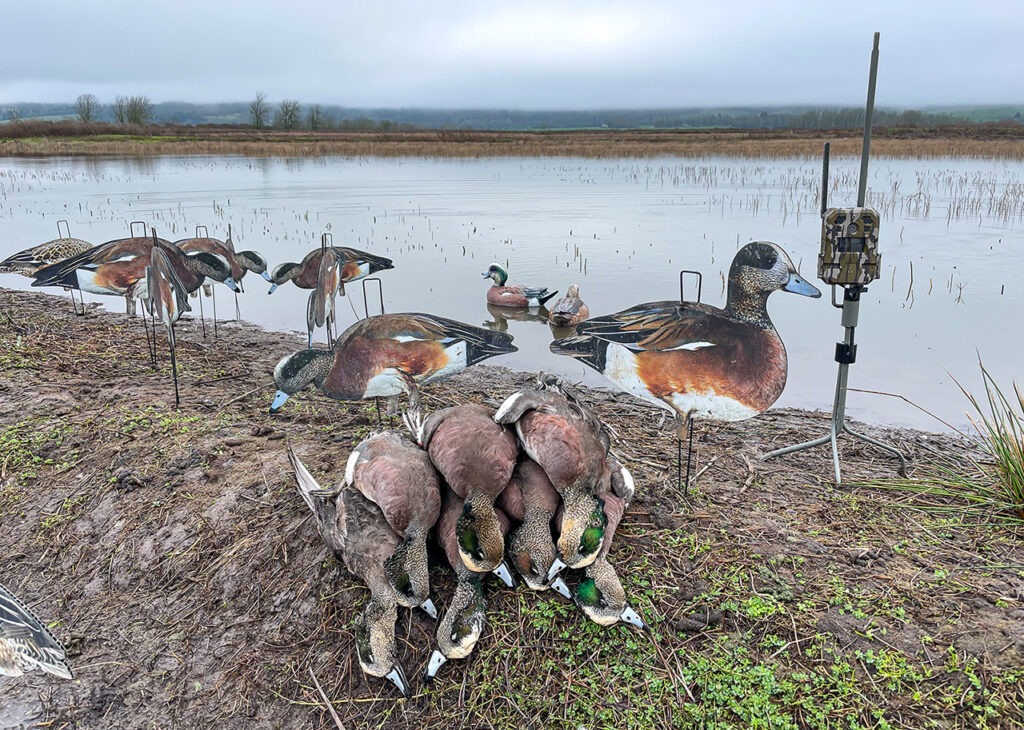
I hate managing electronics. I want to hunt, scout, take pictures, and write. Enter the Moultrie Mobile cameras. These cellular cameras take automatic firmware updates over the air. This means you never have to go to the camera to pull the SD card, plug it into a computer to upload the new firmware, and then put it back into your camera. Firmware is software for the camera that tells the camera what to do and how to act. It does the work for you. And it’s getting faster and more advanced, thanks to continual efforts to make it better.
Before switching to cellular cameras, I spent over $800 monthly on gas, batteries, and SD cards to run my non-cellular trail cameras. And the hours spent setting, moving, changing cards, and looking at the footage were mind-boggling. For 24 years, I’ve made a living as a freelance writer, and the Moultrie Mobile Edge Pro is one of the biggest timesavers I’ve encountered.
I set up cellular trail cameras in places, hoping to catch ducks feeding and roosting. Once I know when ducks show up in an area and what they’re doing, I can plan when and how to hunt them best.
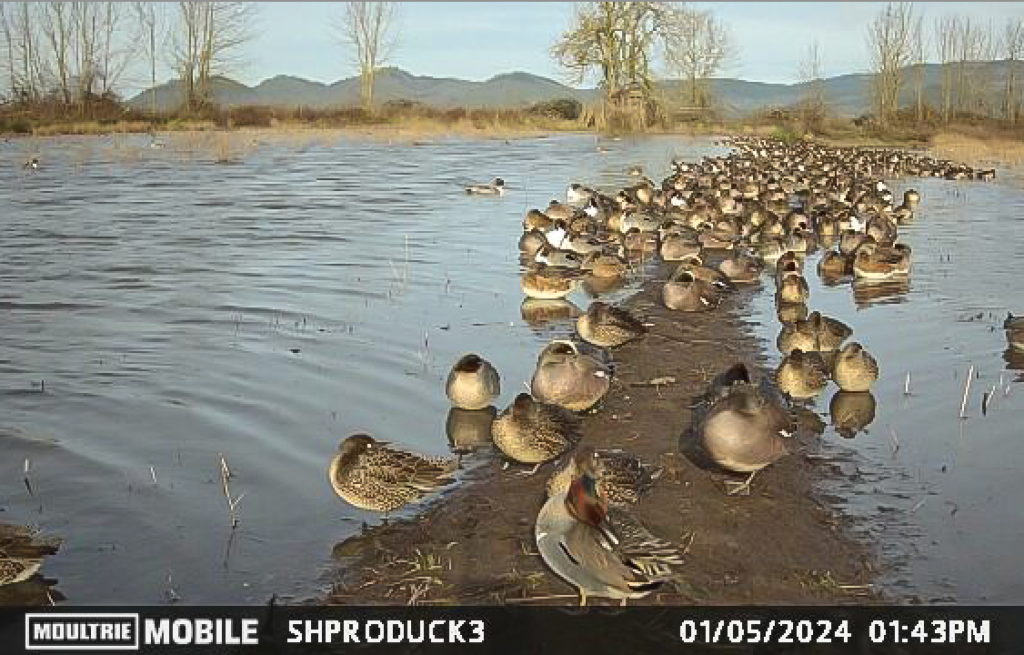
This time of year, I’m closely monitoring winter storms. Heavy rain not only knocks down new food for ducks to feast on but also causes rivers and ponds to rise, giving ducks access to more food. I also watch the direction and intensity of winds because this will move food sources across a body of water. Get a 20 mph wind blowing across a big slough in a river or a pond, and food will assemble on one end. That’s exactly how I killed a recent limit of drake wigeon.
The timing of hunting a specific spot is essential. It might look cool to have 500 ducks preening and sleeping on camera at midday, but that’s not when you want to hunt it. You want to hunt it on the front end, when birds first arrive.
Pay attention to the timestamp on the thumbnails you receive from your cellular camera. One day, I got over 700 images from one camera on the edge of a newly flooded field. I only downloaded a few videos: one early in the morning, one at midday, and one later in the afternoon. The first clip revealed less than a dozen ducks feeding. In the second clip, hundreds of ducks were roosting. In the third video, they were eating and preening. They left the area soon after that. I hunted that spot early the next morning and pulled a limit in less than 30 minutes. I wasted no time picking up my decoys and getting out of there. When I got home, my phone was blowing up with hundreds of images of ducks piling into the same spot. Two days later, I hunted it again early in the morning and limited in 10 minutes. That success came because of the information the trail camera videos revealed.
I like hunting in the wooded creeks in my area for mallards and wood ducks. I only hunt these little hideaways when bird numbers build. Because I can’t be in all the places I need to be to scout, I rely on cellular trail cameras to let me know what’s happening. In the late season, I look for rising water and ducks moving into secluded places in the creeks. Specifically, I’m watching for ducks arriving at first light and where they continue to roll in all morning long, then eventually roost there all day.
Once bird numbers are high, buddies and I will go in, shoot fast, and get out of there. If we’re not limited and there’s a lull, we’ll pull the decoys and get out of there before the big push of ducks arrive. This allows us to hunt the place once or twice before water levels drop and ducks relocate.
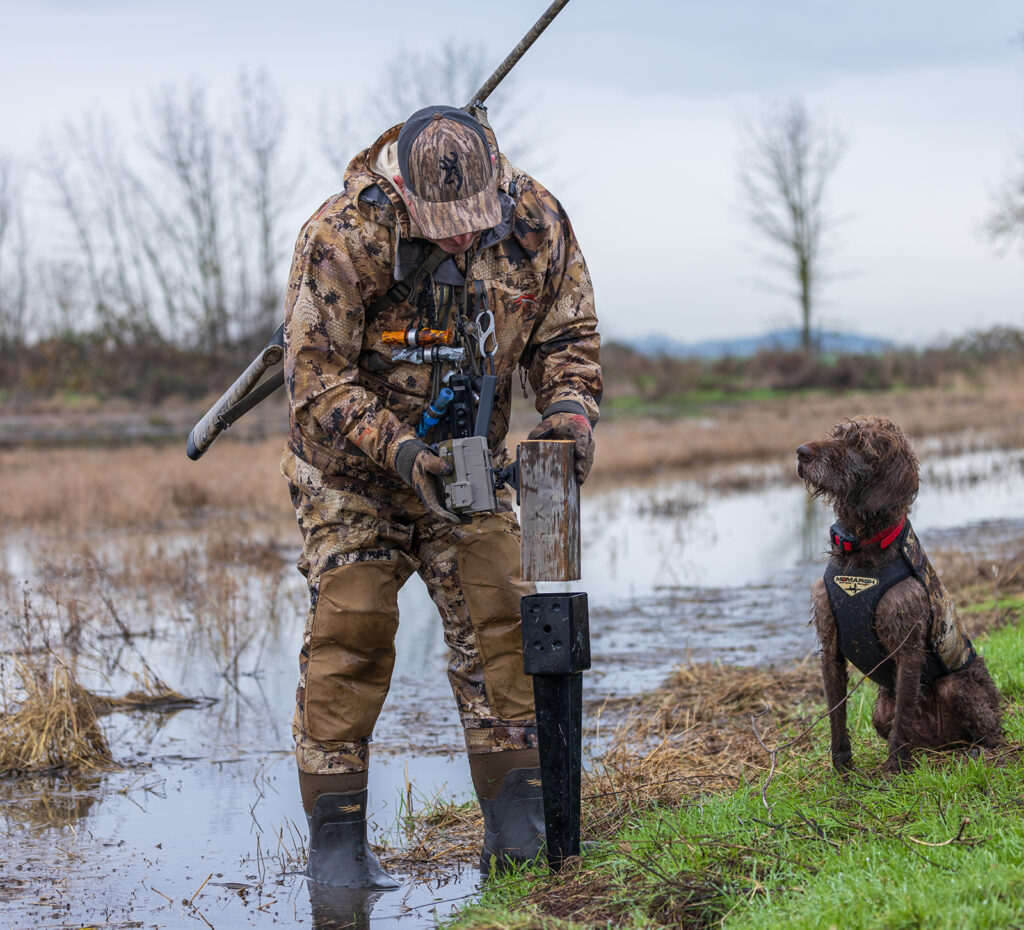
While I rely on trail cameras all season long, now is the time they’re most valuable. With so many storms, so much water, new food sources continually being exposed, and fresh ducks pushing in from the North, Moultrie Mobile cellular cameras are my eyes in the field. They do my scouting for me, allowing me to hunt more places more efficiently and write more stories like this.
Note: Check out Scott Haugen’s Instagram page for trail camera video clips of ducks in action.
